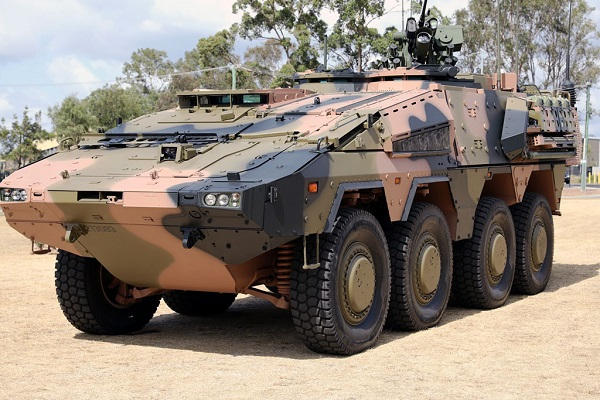
Initially, the Boxer infantry fighting vehicle program was to be implemented within the framework of European cooperation involving France, Germany, the United Kingdom and the Netherlands. Only Paris and London decided to withdraw from it at the dawn of the 2000s, which led, on the French side, to the development of the BMP. [VBCI], entrusted it to Nexter. As for the British, they changed their minds… in 2019, with a total order of 623 copies.
In any case, Germany and the Netherlands continued to develop the Boxer within the ARTEC consortium [ARmoured vehicle TEChnology], formed by Krauss-Maffei Wegmann, Rheinmetall MAN Military Vehicles and Rheinmetall Military Vehicles Nederland. Since then, the Dutch Army has acquired 200 copies [livrés entre 2013 et 2018] and the ground component [Heer] From the Bundeswehr it had 405 units in June 2021, including 256 in the troop transport version and 72 in the medical version.
In addition, the ARTEC Boxer has had some export successes, particularly with Lithuania [88 exemplaires] And above all, Australia, which in 2018, as part of its Land 400 Phase 2 program, notified Rheinmetall to order 211 armored vehicles in the CRV version. [reconnaissance au combat] For 3.3 billion euros.
Since then, the first 25 CRV Boxers, manufactured in Germany, have been delivered to the Australian Army. As for the remaining 186, they are to be produced by Rheinmetall in Brisbane, Queensland, “using Australian steel”. This production began on March 21.
But the Brisbane plant won’t just produce CRV Boxers for the Australian Army.
Indeed, on March 23, the German Ministry of Defense announced its intention to launch cooperation with its Australian counterpart in order to acquire 100 Boxer equipped with a 30-mm turret. Negotiations on the legal and commercial aspects of this matter will soon begin.
According to Berlin, these Australian-produced vehicles will replace the Wiesel 2 armored vehicles from the Bundeswehr … Wiesel 2 which has not yet been “boxed” into the same class because it weighs only four tons, seven to eight times less than the Boxer. when in combat order.
The Australian Government is “excited at the prospect of producing Boxers for the German Army in Brisbane […] “In what could be one of Australia’s largest arms export deals,” said Pat Conroy, Deputy Minister for Defense Industries.
In Berlin, it was determined that the goal is for the Bundeswehr to be able to receive these boxers from 2025.
In order to meet this tight timeline, parliamentary approval will be obtained as soon as the contract is ready. The German Defense Ministry said the project would be funded by the Bundeswehr Special Fund. He adds: “This collaboration […] It is a clear sign of confidence in the cooperation between Germany and Australia.”

